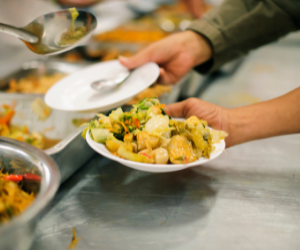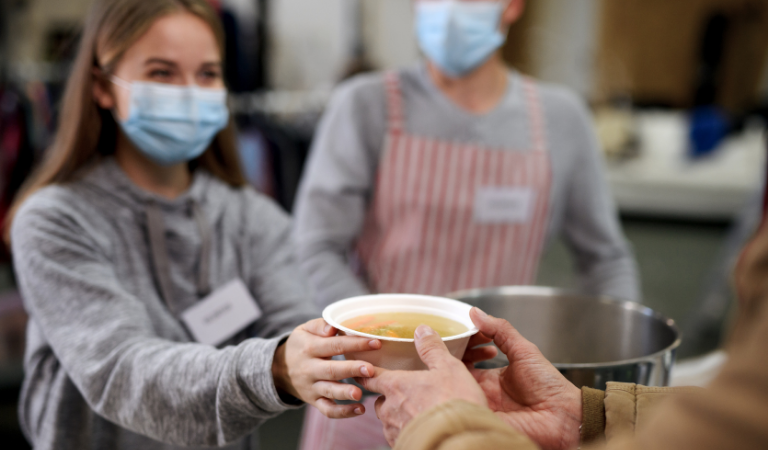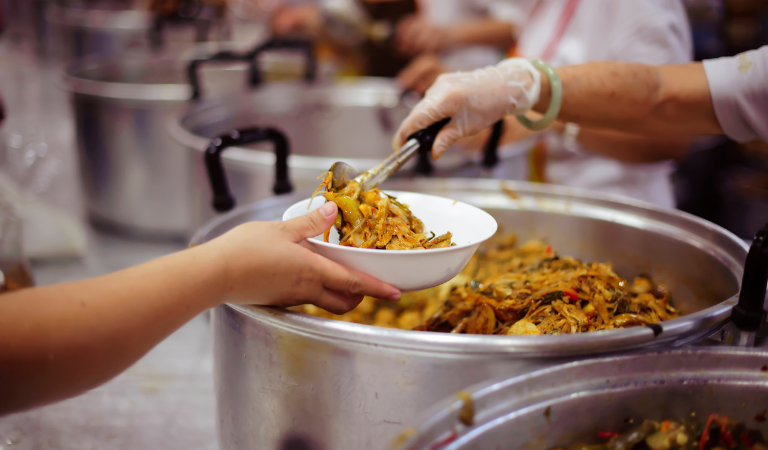In times of need, the restaurant community comes together to provide meals for all. The COVID-19 pandemic has had a massive impact on the food and restaurant industry. Many have felt the financial and emotional toll of enduring mandatory shutdowns and a decrease in foot traffic to their businesses. Unemployment and food insecurity across the country has skyrocketed since the start of the pandemic, and thousands of people have been left without a meal each day.
However, several restaurants in food-insecure communities have stepped up and brought aid to community kitchens and grocery distribution centers. From providing large quantities of meal kits to volunteering staff after hours at community kitchens, there are a number of ways your establishment can offer a helping hand to your community.
How The COVID-19 Pandemic Has Affected The Restaurant Industry

The COVID-19 crisis forced many businesses to shut down for several months at the start of the pandemic. As state restrictions began to lessen, establishments had the opportunity to open with limited capacity. However, that hasn’t made the monetary and emotional burden of this pandemic any easier for operators and staff.
The financial impact of the pandemic has been devastating for the restaurant and bar industry. Many operators haven’t had the ability to reopen, are in debt, or have laid off several staff members to keep their business afloat. Restaurants have suffered record sales losses during this pandemic, and a return to normalcy is still yet to be seen. A surge in take out and delivery has caused operators to shift their brands to focus on off-premise dining, bringing on several unexpected costs to struggling businesses.
How The COVID-19 Pandemic Has Affected The Community
Outside of the restaurant industry, a similar financial and emotional impact has been left on communities. Unemployment, reduced hours, and little aid have left many individuals suffering from food insecurity and joblessness. With the future still uncertain, the COVID-19 crisis has left an extreme burden on people, struggling to feed their families or keep their homes.
While many had already been experiencing joblessness and food insecurity long before the pandemic started, community resources such as soup kitchens or community kitchens were available to individuals in need. Community kitchens often rely on large donations from grocery stores, schools, and public funding to keep them up and running. But pandemic panic shopping, along with school shutdowns and government budget cuts have left many community kitchens without any sort of additional help.
Restaurants Take Initiative
Even though many restaurants are still feeling the heavy losses this pandemic continues to bring upon their businesses, giving back to the community has become essential in easing the toll of the COVID-19 crisis. Restaurants in food-insecure communities have begun donating their resources to local soup kitchens or grocery distribution centers. Establishments are in many ways providing much-needed relief to community kitchens that were struggling to feed people without their usual donations.
How Your Restaurant Can Get Involved In Your Community
Operators have stepped up and offered to donate leftover ingredients, create meal kits, or even volunteer alongside staff at community kitchens. Despite facing their own adversities, restaurants that have provided resources to kitchens in food-insecure communities have helped deal with the influx of people turning to them for meals. If your business is looking to provide aid to local community kitchens, below are some helpful tips and ideas.
Providing Meal Kits Or Groceries
For restaurants looking to offer a helping hand, preparing meal kits might be the easiest way to provide community kitchens with essential aid. Many soup kitchens create their own meal kits to give out to people, so donating any number of to-go meal kits is a great way to remove pressure off of organizers of community kitchens.
Have you and your staff take any remaining inventory of fresh ingredients and spend some time creating meal kits. Although anything helps, keep in mind that most of these meal kits would be feeding families of three or four so be sure to donate as much as possible. If you find that you and your staff don’t have the time to assemble meal kits, donating groceries and pantry supplies to local grocery distribution centers is just as helpful.
Volunteering With Staff
To get involved with your community kitchen, consider taking a day out of your week to volunteer with staff at a local soup kitchen. Soup kitchens are more often than not understaffed, and the pandemic has certainly caused a surge in the number of people looking for a free meal for themselves or their family members. Volunteering alongside your staff at a local community kitchen is a good way to get involved and provide aid to your community.
Plan a day out of the week, or a couple of days a month, to have you and your employees spend some time working the lines at local community kitchens. Depending on where they need the most resources, your staff can help out local community kitchens by cooking meals, serving guests, or managing busy lines.
Partnering With Community Kitchens To Offer Discounts
Although extra hands and meal kits are always needed, you don’t always have to provide community kitchens with that kind of aid in order to help out. If keeping your restaurant afloat means you and your employees don’t have the time to volunteer at community kitchens or donate meals, there are still other ways to help out individuals in food-insecure communities.
Reach out to a local community kitchen and ask if they would be willing to partner with your restaurant to offer struggling individuals a discounted or free meal at your establishment. This is a great way to still help out at community kitchens, without physically having to be there. Organizers at community kitchens can direct individuals to your restaurant to receive a discount on their next meal. Discounts don’t have to be limited to community kitchen attendees. You can also create discounts for healthcare workers at the front lines of the COVID-19 crisis or essential workers who are at a higher risk during this time.
Fundraising For People In Need
Another great way to provide resources for people in food-insecure communities is by fundraising at your restaurant. If you find that your restaurant doesn’t have any extra resources to spare, consider putting together a fundraising campaign to pool together funds for community kitchens. Creating a fundraising campaign at your establishment can get your customers involved too. Many patrons are looking to help out people in need during this pandemic and would enjoy being able to donate their resources while enjoying a meal.
Your staff can easily put together and advertise a fundraising campaign for a local food drive of your choice. Consider donating a certain amount of proceeds from popular menu items, and instruct employees to tell customers about your fundraising campaign. Provide patrons with the option to donate to your fundraising campaign directly at checkout or donate a percentage of sales from your restaurant that day.
Opening Your Own Community Kitchen
Many restaurants across the country have turned their losses into wins for their community. If your business wasn’t able to bounce back from the mandatory shutdowns the pandemic caused, you may be able to use your space as a community kitchen.
If being able to offer a helping hand to your community during this time is a priority, consider opening up a community kitchen of your own. Food-insecure communities often do not have enough resources available to go around and lack enough community kitchens needed to feed individuals in need. If you are aware that your own community lacks its own soup kitchen or grocery distribution center, this is a great time to create one for your area.










